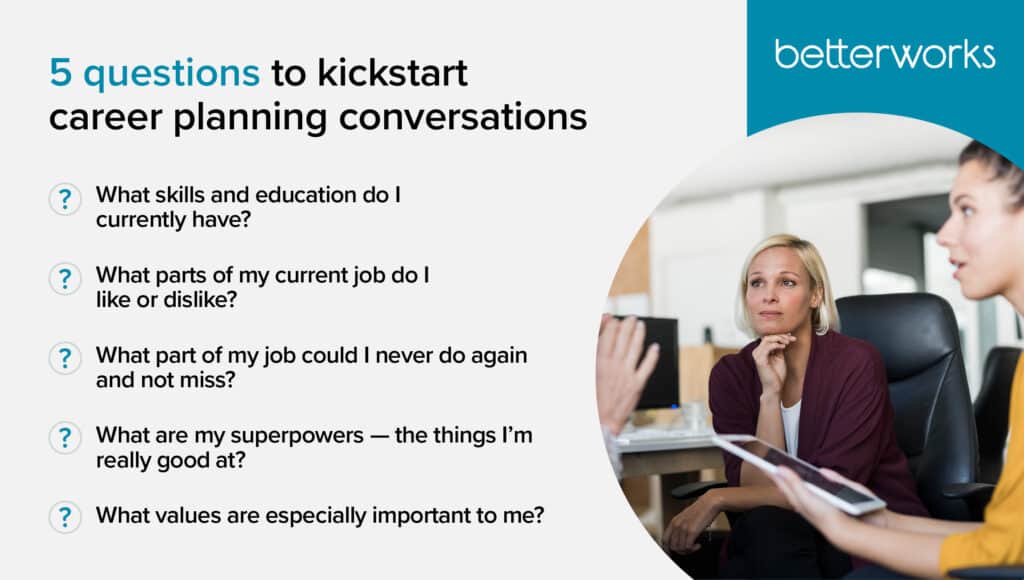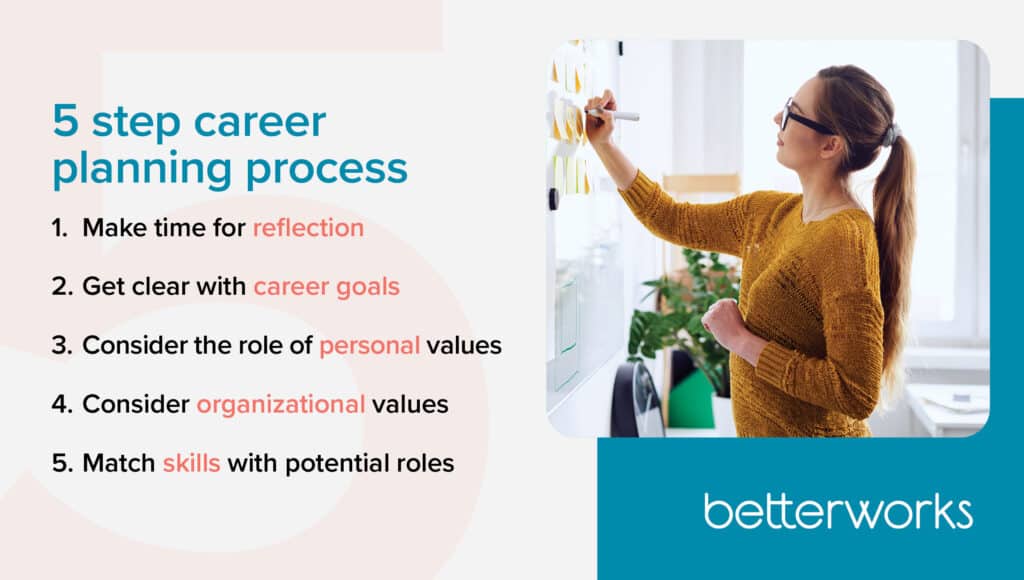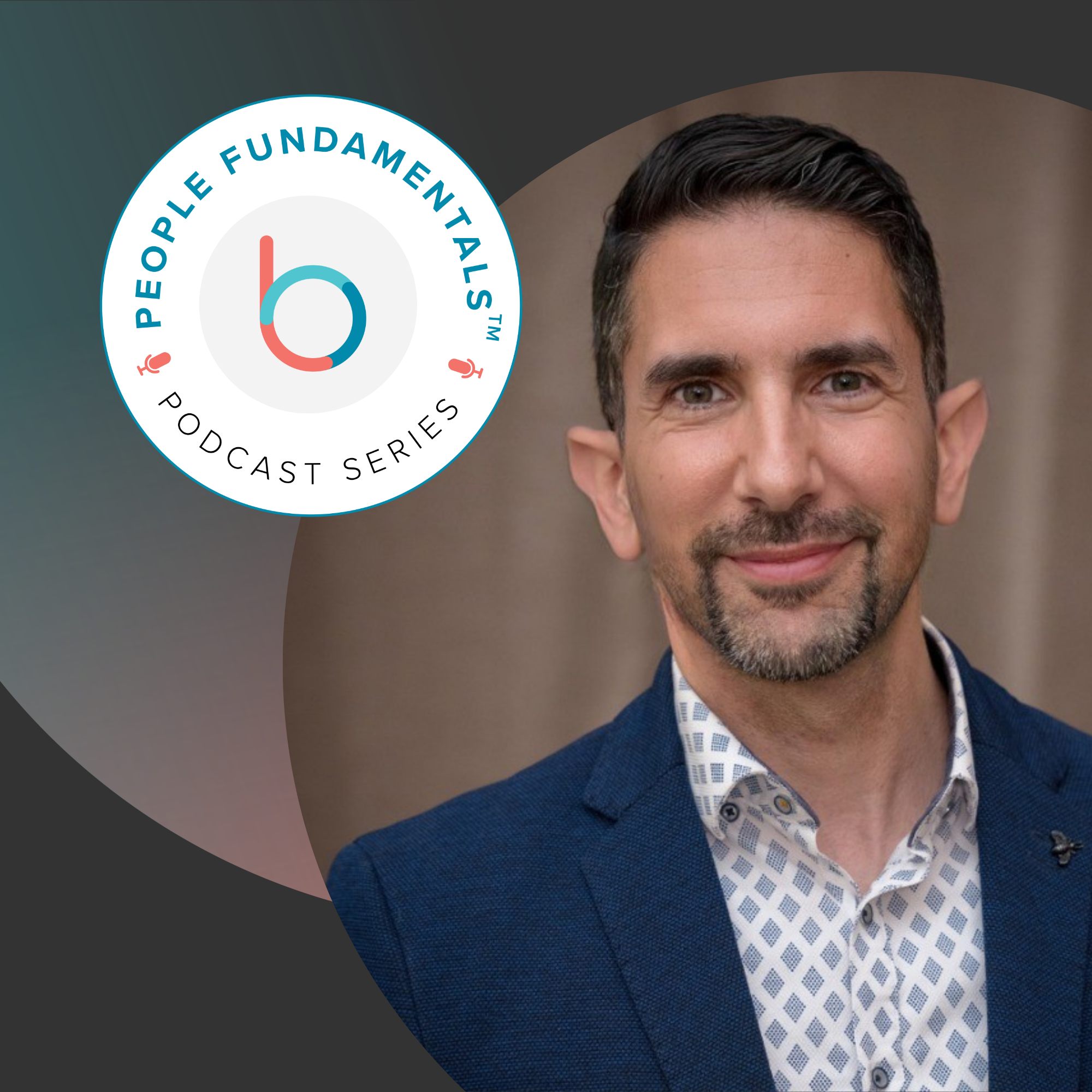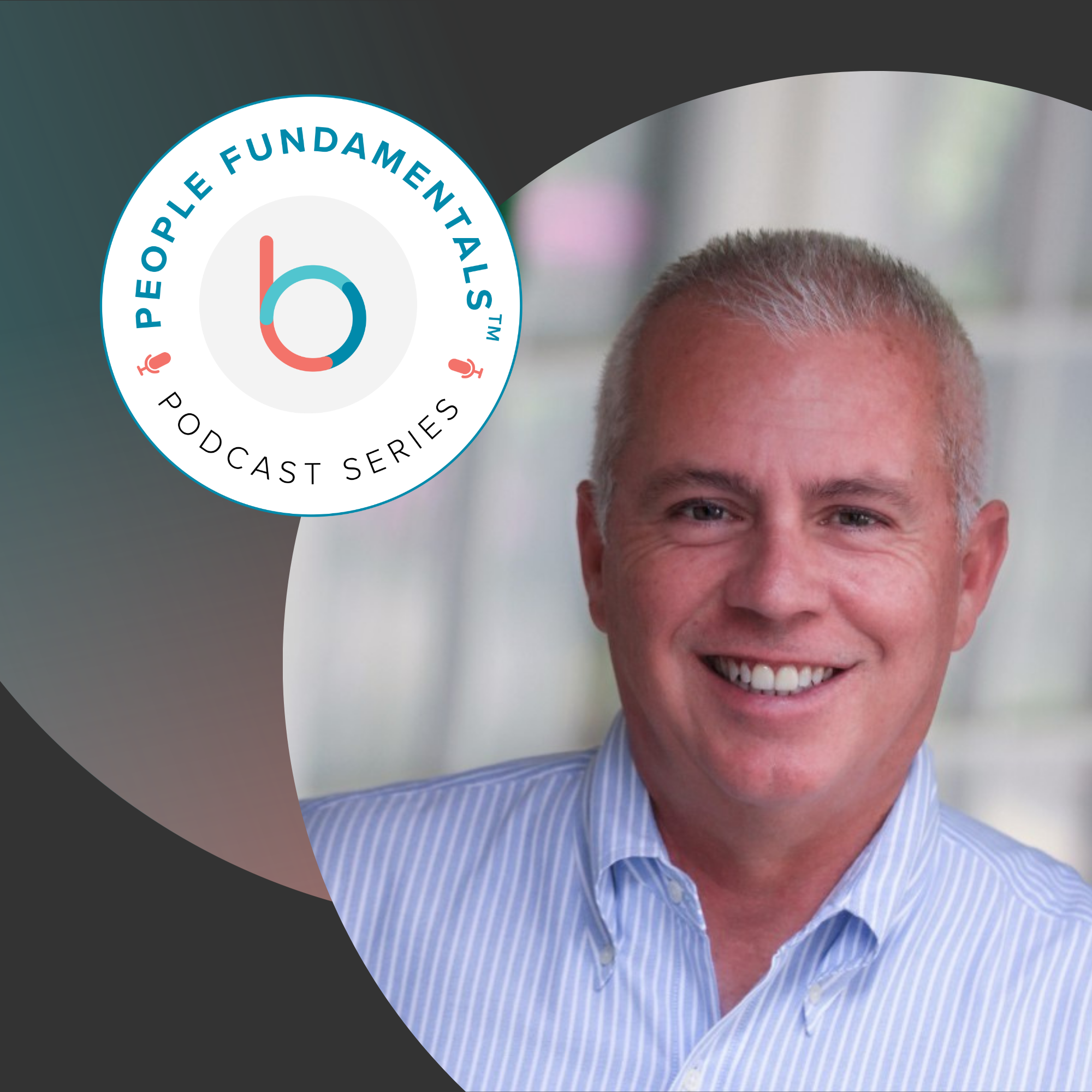The career planning process creates a road map for employees to visually see the next steps in their career progression. When deployed inside organizations, this process also helps HR leaders and managers create better training and professional development opportunities for the entire workforce.
Employer support of people’s career ambitions isn’t a feel-good exercise. According to the Work Institute’s 2022 Retention Report, 21% of employees who quit their jobs in 2021 did so because of career reasons — career development and choosing a different career path being chief among them. The report encouraged companies to manage employee careers from within, focusing on three paths: growth in the current role, lateral movement, or upskilling with the intention of promotion.
Explore how to develop a career planning process for your business.
What is career planning?
Career planning and career development are often used interchangeably, but they aren’t the same.
Career planning is a process in which people analyze their personal strengths, weaknesses, skills, interests, and more to determine which job opportunities would be a great fit. They then set goals to pursue those opportunities. Career planning reflects an employee’s professional goals — the full vision of what they aspire to in their career. You can undergo career planning without involving an employer.
Career development is narrower in scope, generally seen as providing direction for growth and tracking progress for a worker inside a specific organization. While workers are expected to take individual responsibility for their career planning, they often have access to resources and support to implement the plan from their employer, including formal courses and on-the-job training.
A career development plan also has a narrower focus than an employee development plan or a people development plan.
Why career path planning is important for employers
While career path planning can be an individual activity, organizations can also play a role. Employers that help employees structure this process can demonstrate their commitment to employee development, which can increase morale and engagement.
By showing employees how their career objectives could fit within the organization’s job roles and overall strategy, companies may also see increased retention rates.
3 key components of the career planning process
The career planning process has three primary components.
Self-exploration
Self-exploration is when employees examine their interests, skills, and abilities to determine what career path they wish to pursue. Employers can create structure in this step through sample questions that guide employees. Typical exploration questions include:
- What skills and education do I currently have?
- What parts of my current job do you like or dislike?
- What part of my job could I never do again and not miss?
- What are my superpowers — the things I’m really good at?
- What values are especially important to me?
These open-ended questions can help employees better understand their interests, values, and personality traits. The goal is not just to understand what they like about their current job role and responsibilities, but also to realize how those feelings translate to other possibilities.

Career exploration
Self-exploration helps people understand more about themselves. Career exploration helps people understand how those findings apply to particular career paths or job roles.
Encourage employees to cast a wide net for career options that fit their skills, values, and interests — even options they’ve never considered, such as roles with adjacent skill sets or similar roles but in a new functional area. Likewise, just because someone has experience with a certain job, industry, or career path doesn’t mean it’s the right fit.
Organizations can also use this career exploration step to help employees narrow their choices. For instance, career exploration could uncover training opportunities that organizations can provide or pay for. HR leaders could also pinpoint lateral moves that are a good fit for productive yet dissatisfied employees, especially if promotions are scarce.
Action plan development
Once employees have a better sense of themselves and their career path options, they can start planning for what’s next. This plan could include whether they’ll explore new skills, new job roles, or even an entirely new career. They might also acknowledge roadblocks, the pros and cons of certain choices, and what timelines are realistic for achieving their career aims.
Organizations can help employees at this stage see how their careers can progress internally. Be realistic and specific regarding what the employee will need to do, especially if they lack the requisite experience, skills, or certifications.
Employees can take all this information and transform it into an actionable plan to go after their goals. For example, employees who want to move from contributor roles to management might need to improve their leadership skills and gain financial management knowledge. That training could come in the form of formal coursework or cross-functional assignments. Organizations can help these employees — and their chances of retaining them — by actively supporting these efforts. Managers can discuss these career goals during regular check-ins.
How to develop a career planning process
Organizations can help employees with career planning by developing a process that can be applied to their unique circumstances and goals. Here are some of the areas HR leaders can encourage employees to explore.

Make time for reflection
Everyone has skills and strengths that they can match against career interests and personal values. The key is having employees take an inventory of what they are good at and enjoy doing. Exploratory questions to ask them to consider include:
- What are your favorite hobbies and interests?
- What were your favorite classes in school?
- What type of education, skills, or training do you have?
- What did you enjoy or not enjoy about past jobs or internships?
The ideal career path will align with those interests and values. When organizations help employees categorize their assets, they signal their support, and put employees a step closer to finding the ideal career path, even if it’s not in their current role.
Get clear with career goals
Encourage employees to distinguish between short-term career goals, which are no more than six months out, and longer-term goals, which can cover three to five years out (or even longer). Career planning goals are not necessarily tied to the employee’s current organization — they can also include training, education, professional memberships, mentoring, and networking.
By understanding your employees’ short- and long-term goals, you can better align them with your organization. When employees understand how meeting the company’s goals contributes to their personal goals, they become more engaged and productive, leading to better outcomes for everyone.
Consider the role of personal values
Just as workers need to take inventory of their strengths, they also need to be clear about their personal values and how those values shape their priorities.
Employers can align with employees through shared values. However, employers must demonstrate these shared values through action, not just words on the website or a formal code of ethics. By demonstrating how employees should apply their values in the workplace, your organization can guide decision-making across the workforce.
Consider organizational values
Once employees have a good understanding of their values, they can research and evaluate how those values intersect with available career paths at different organizations. Employers creating an internal process can use this step to help employees see which types of work, departments, or functions within the company best match their values.
Employers can make themselves more attractive to applicants and increase employee loyalty when they demonstrate precisely what their company values are and how they translate into actions and behaviors in each role. Organizations might lose applicants and even employees whose values aren’t a match, but that creates room to hire only the best-matched candidates who are most likely to thrive and stay.
Match skills with potential roles
An important part of career planning is not feeling restricted by current job title or role. Instead, employees should look closer at the job descriptions, including the daily responsibilities and the expected skills and experience.
Employers can improve the odds of a successful hire by being specific — and realistic — in job descriptions. If the role doesn’t require seven years of experience, don’t list that, as you’ll deter qualified candidates. Likewise, if collaboration and sharing credit are important values, say so. You’ll attract candidates who want to work where those things are celebrated.
Career planning template
Employees and employers alike benefit from mapping out career plans. HR leaders should rely on templates as they create career planning processes within their organization. This ensures everyone follows a similar process that aligns with the organization’s goals while helping employees explore their options.
Consider the steps listed above and how they might be organized into a structured list of key questions and considerations. Templates are especially helpful for organizing your thoughts and creating a framework around decisions and timelines. Just remember that templates alone can’t answer the hard questions about what career path to pursue or which values are most important.
Consider these elements to create a career planning template for your organization.
Self-exploration
This section is intended to examine your interests, skills, and abilities to determine your career path. Please answer the following questions:
- What skills and education do I currently have?
- What parts of my current job do I like or dislike?
- What part of my job could I never do again and not miss?
- What are my superpowers — the things I’m really good at?
- What values are especially important to me?
- While answering these questions, what skills or superpowers stood out to you the most?
- What values stood out to you the most during this process?
Career exploration
This section is intended to help you apply your findings to particular career paths or job roles. Consider training opportunities and lateral moves at your current job, as well as different career paths.
Match your skills with potential roles
As you fill this out, don’t feel restricted by job titles or roles. Consider how your skills could contribute to organizations. Look closely at job descriptions, including daily responsibilities, expected skills, and required experience.
Identify organizations that align with your values
Evaluate the organizations advertising those job openings. Are they companies that align with your personal values? If unsure, research them to determine their stance on issues important to you.
Action plan
This section combines the findings from the first two sections so you can begin developing your career action plan.
- What is your long-term career goal?
- What are shorter-term career goals that can help you achieve this long-term goal?
- What are accomplishments you can achieve within the next 12 months to help you achieve one of your shorter-term career goals?
Answer the above questions to start forming your career goals and a timeline to accomplish them. Don’t forget to consider training and development opportunities.
Career planning helps employees and organizations
Career planning is an important method of helping employees understand who they are and how they want to spend their working years. By establishing a career planning process at your organization, employees can help employees achieve their goals while supporting yours.
The State of Performance Enablement






